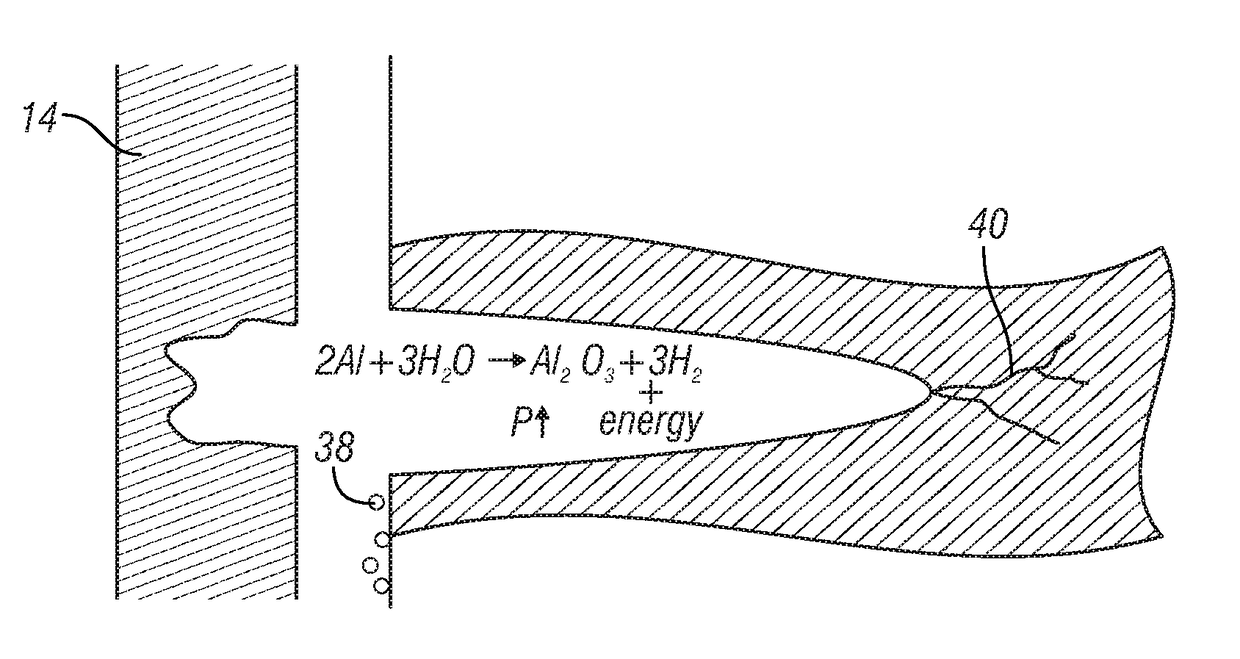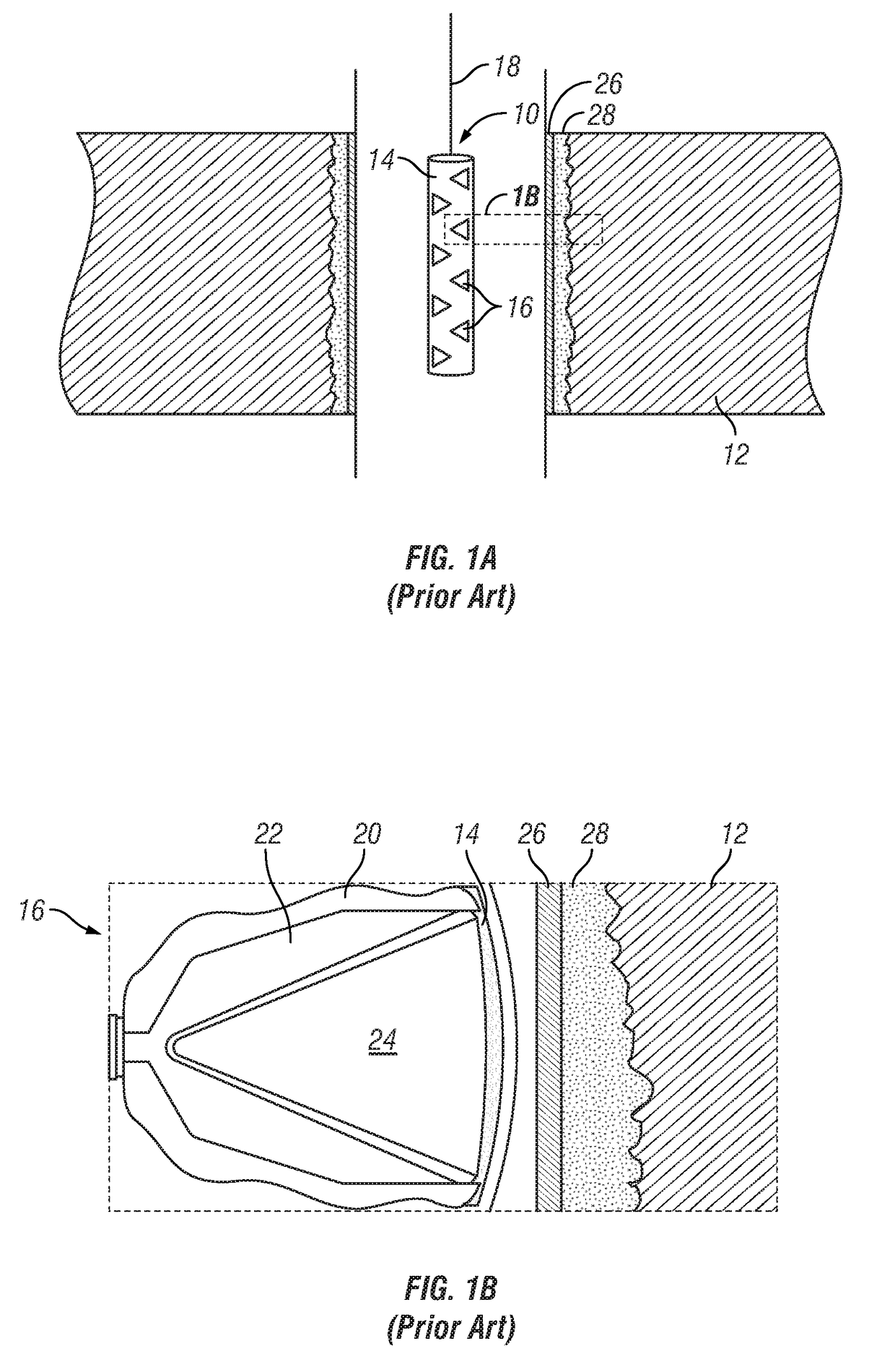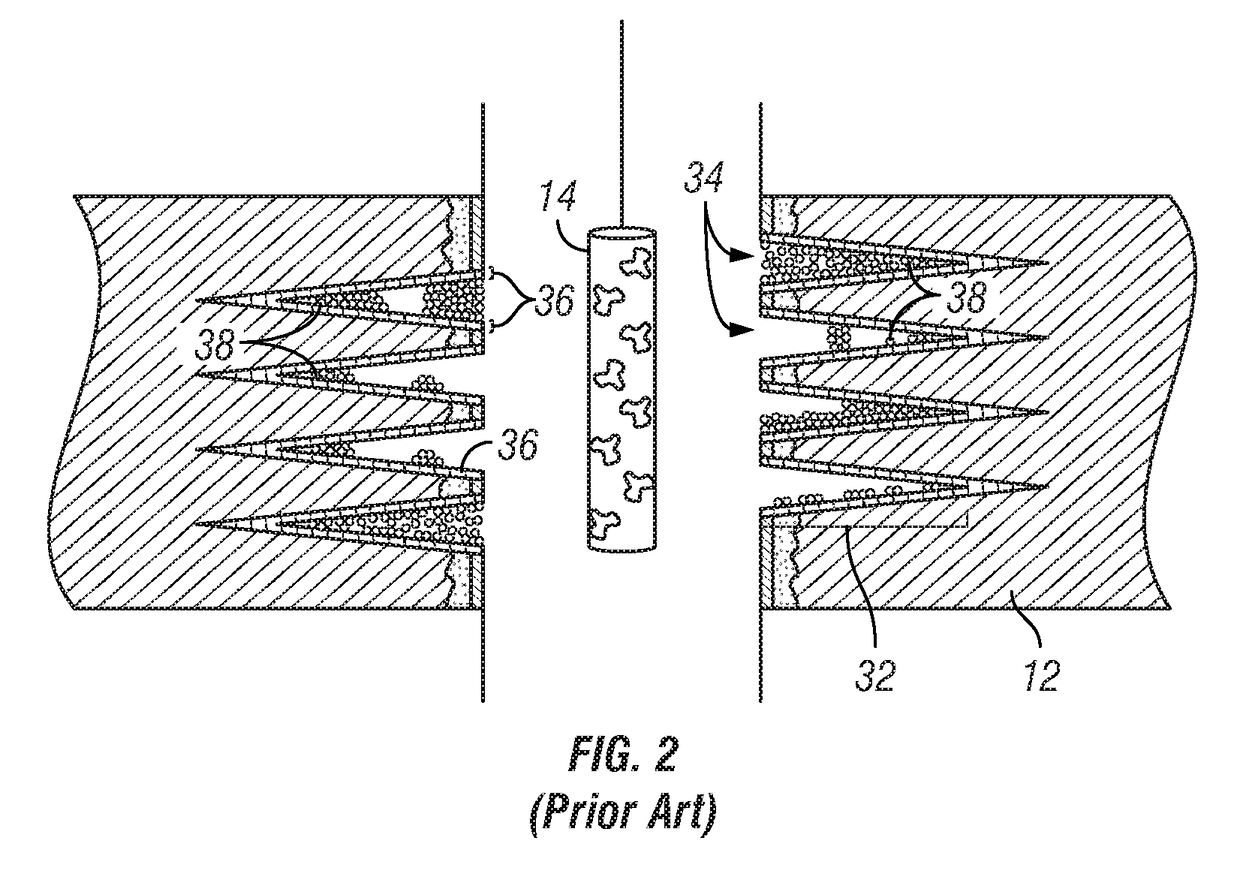Method for the enhancement of injection activities and stimulation of oil and gas production
a technology for oil and gas production and injection activities, applied in the direction of explosive charges, fluid removal, borehole/well accessories, etc., can solve the problems of plastic deformation of penetrated rock, grain fracturing, and inability to perfect solution, so as to enhance the inflow and/or outflow potential of the inlet and/or outflow, and reduce the fluid pressure. , the effect of enhancing a number of injection activities
- Summary
- Abstract
- Description
- Claims
- Application Information
AI Technical Summary
Benefits of technology
Problems solved by technology
Method used
Image
Examples
example 1
[0050]The primary method for characterizing the near-wellbore region in order to compare the efficacy of the new and conventional perforating systems is a step rate test, carried out during a mini-frac (also known as a data frac) prior to the main stimulation treatment. The mini-frac is used to obtain a direct measurement of formation properties such as the breakdown gradient and fluid leak-off coefficient, so that the treatment design can be fine-tuned prior to execution. The step rate test involves pumping a constant fluid into the well at several distinct rates while measuring pump pressure. By combining this information with the other parameters calculated as a result of the mini-frac, near-wellbore pressure losses, perforation friction, and the number of open perforations can each be estimated.
[0051]Using the equation below, perforation friction pressure is predicted as a function of rate, the number of perforations taking fluid, the diameter of each perforation (obtained from ...
example 2
[0064]The Upper Devonian sequence in Pennsylvania constitutes one of the most complex sequences of rocks in the Appalachian basin. This region comprises interbedded conglomerates, sandstones, siltstones and shales. Of the commonly targeted intervals, the wells of the Bayard and Fifth sands are notoriously difficult to complete in certain areas. High fracture initiation and treating pressures are a common occurrence, often resulting in negligible propped fracture creation and correspondingly poor productivity. The Bayard consists of up to three fine-grained sandstones separated by thin shale breaks. The sands range from 3 to 35 feet in thickness and are recognized as important gas reservoirs. Wells encountering well-developed Bayard have tested up to 3 min mcf / d from this zone. The Fifth sand is a persistent and important rock sequence, responsible for both oil and gas production in the area. In gas prone areas, the Fifth tends to be multi-layered, fine- to coarse-grained sandstone c...
PUM
 Login to View More
Login to View More Abstract
Description
Claims
Application Information
 Login to View More
Login to View More - R&D
- Intellectual Property
- Life Sciences
- Materials
- Tech Scout
- Unparalleled Data Quality
- Higher Quality Content
- 60% Fewer Hallucinations
Browse by: Latest US Patents, China's latest patents, Technical Efficacy Thesaurus, Application Domain, Technology Topic, Popular Technical Reports.
© 2025 PatSnap. All rights reserved.Legal|Privacy policy|Modern Slavery Act Transparency Statement|Sitemap|About US| Contact US: help@patsnap.com



